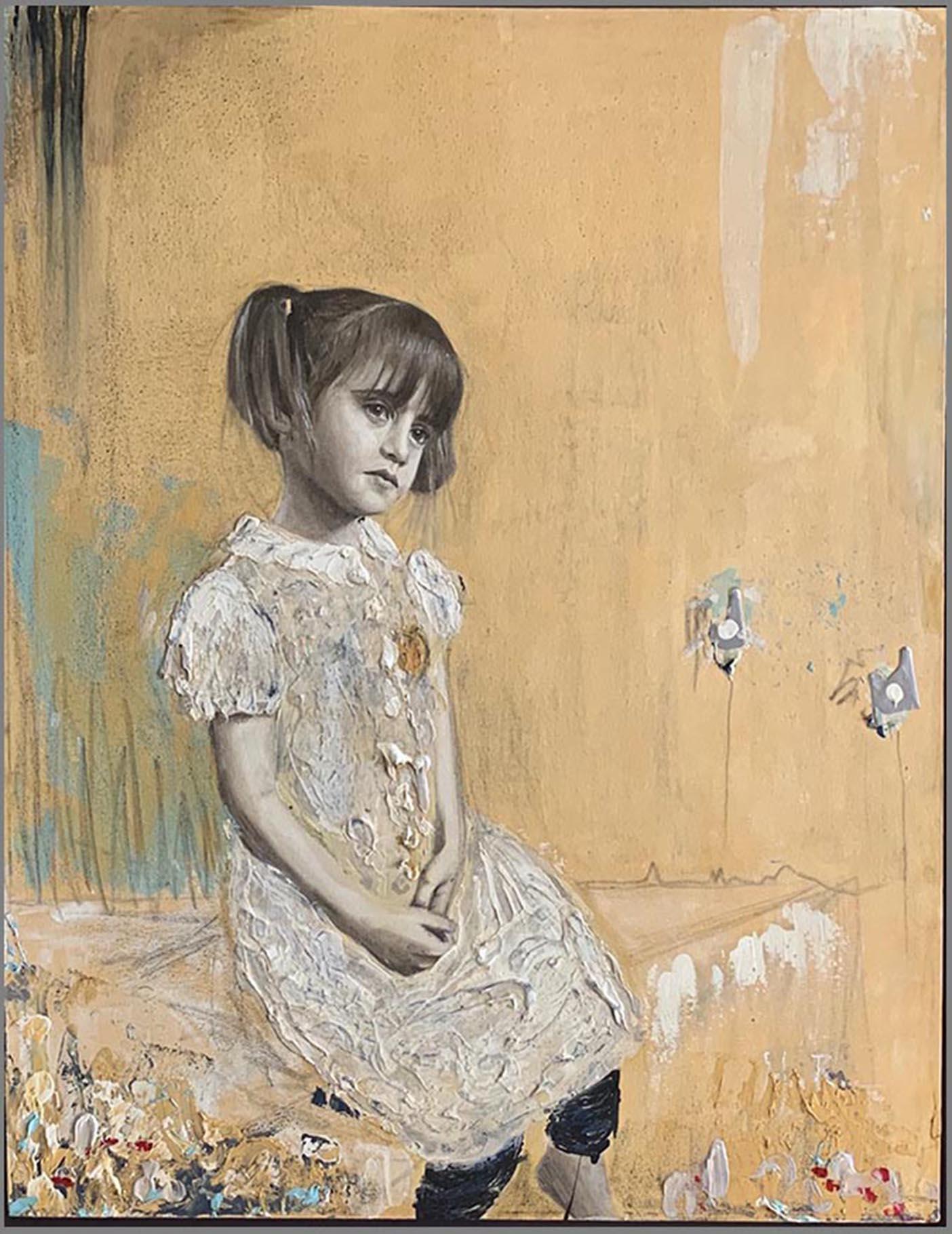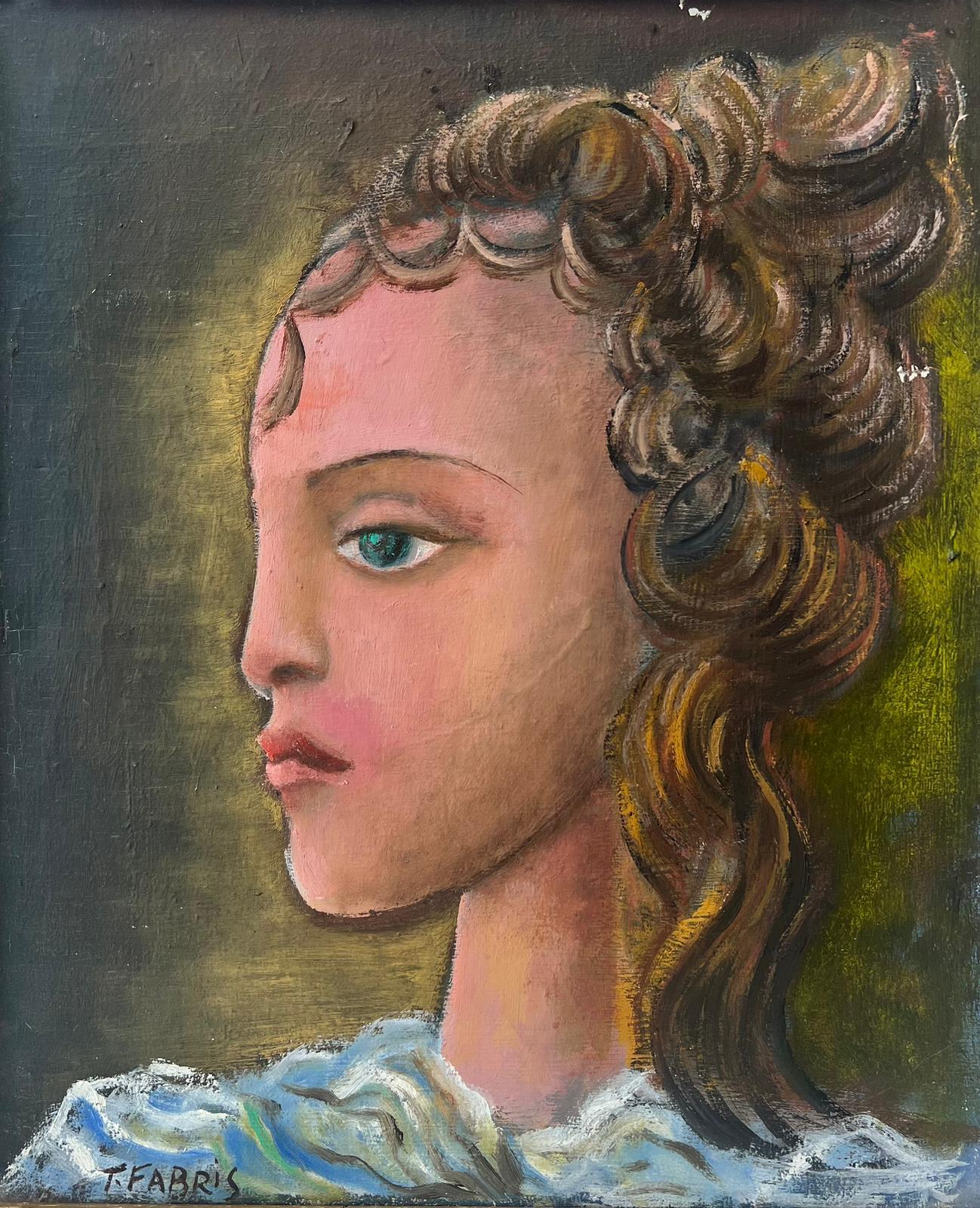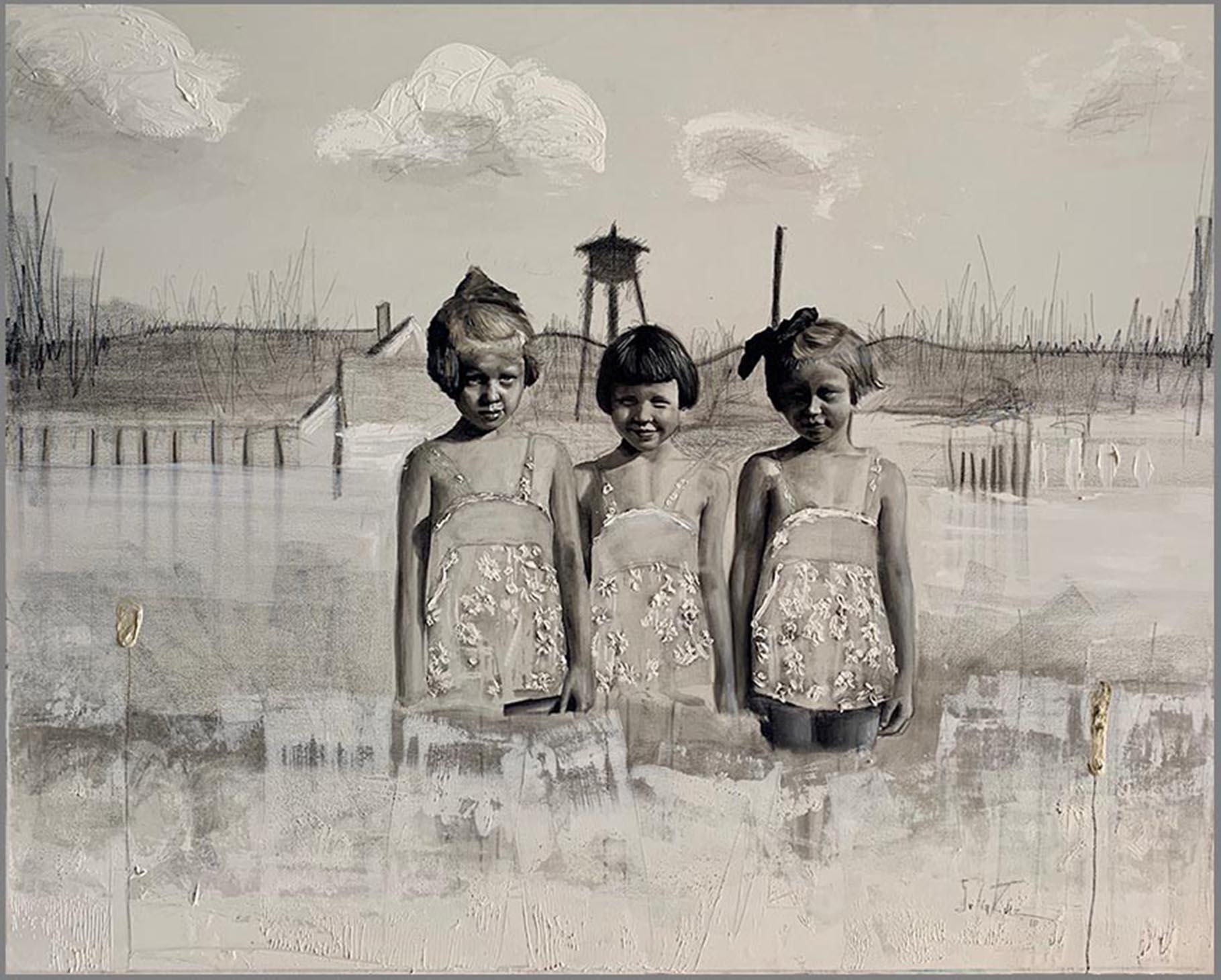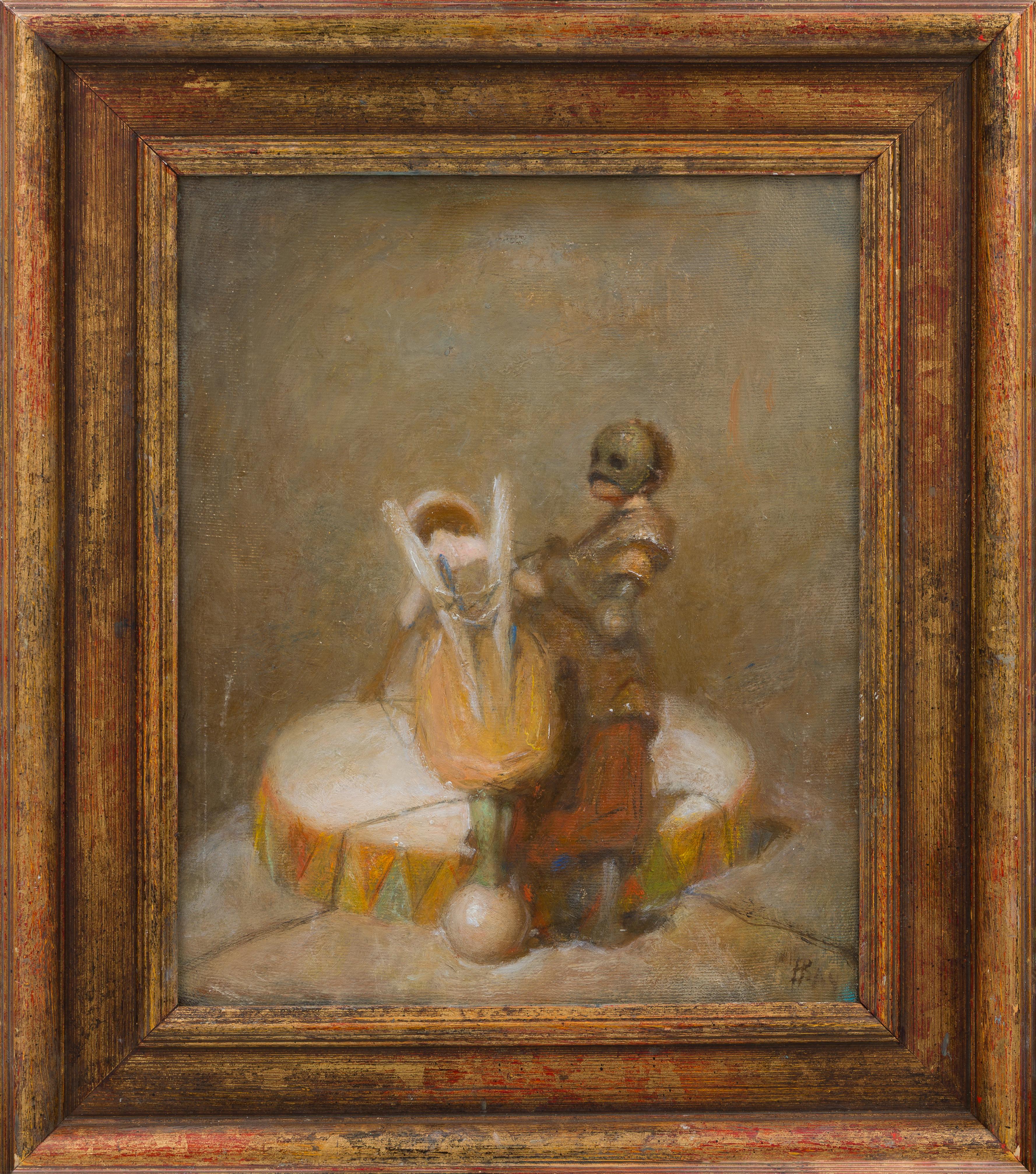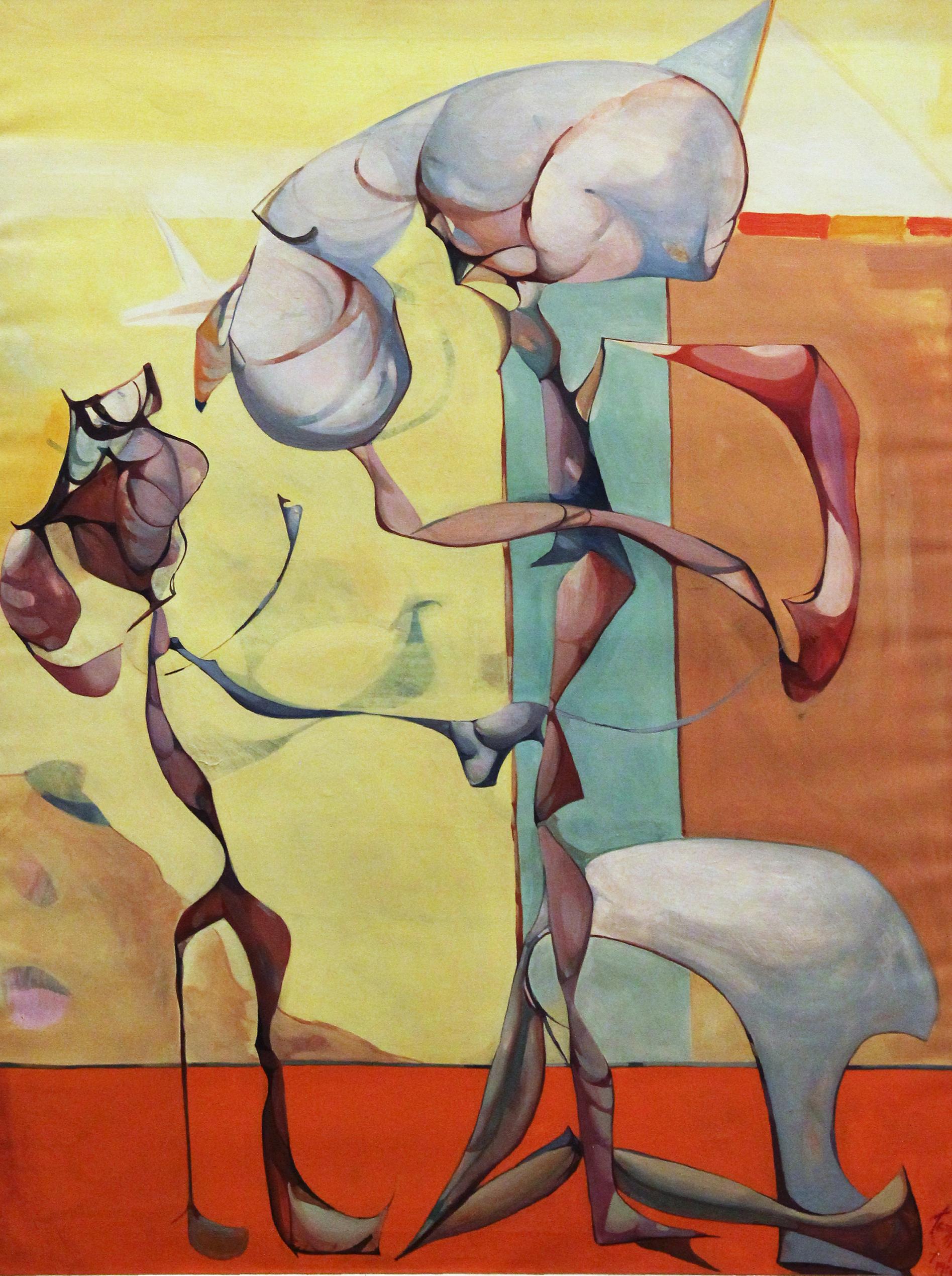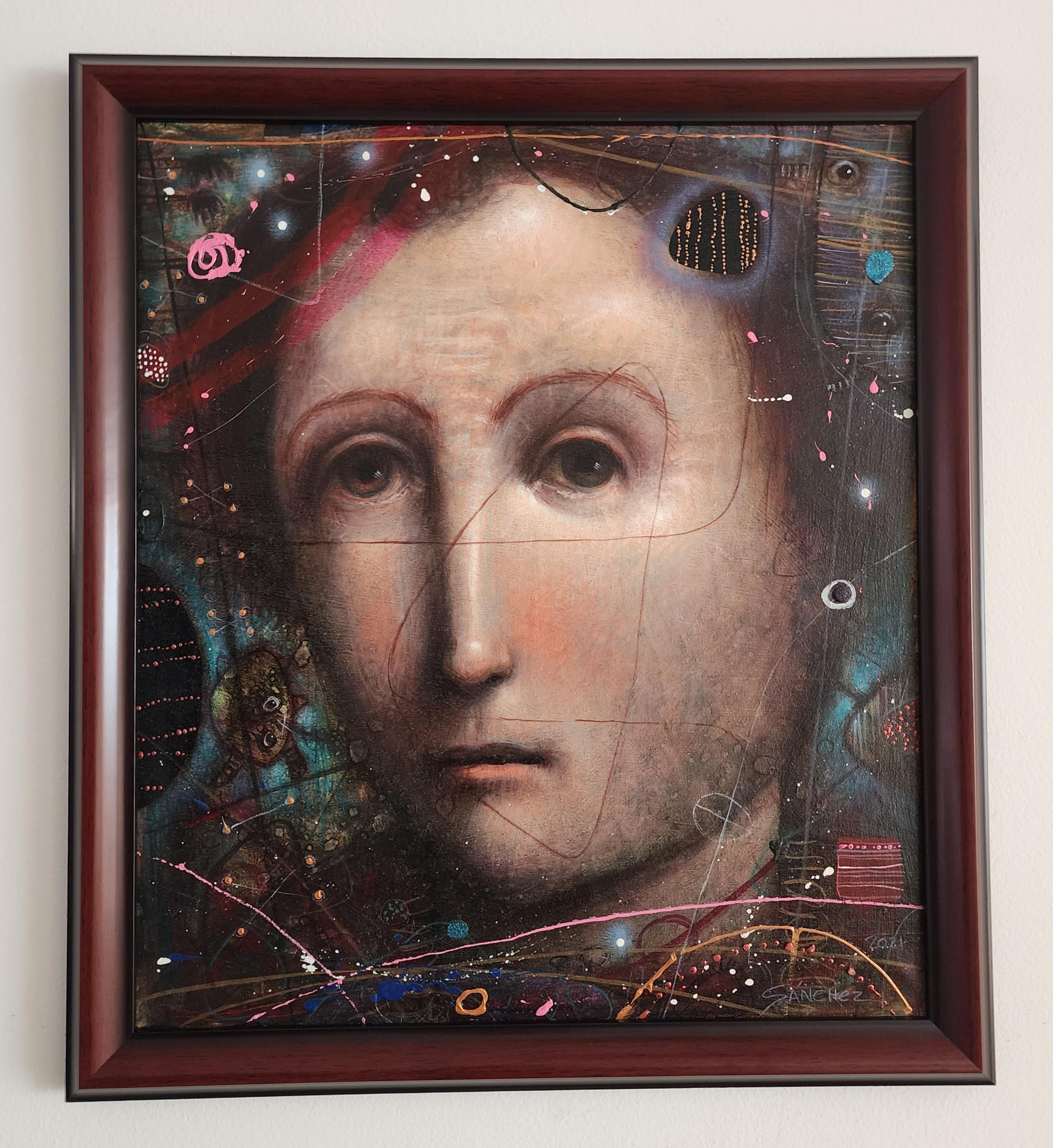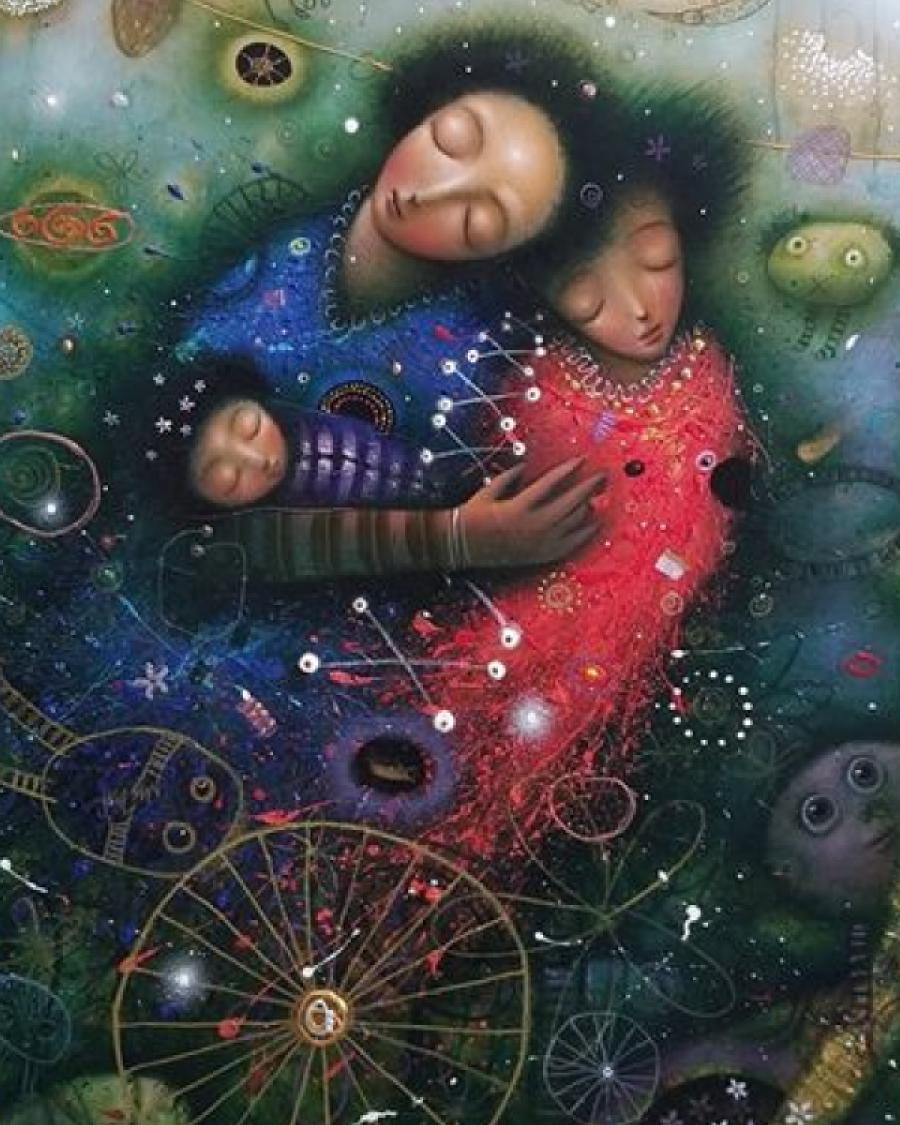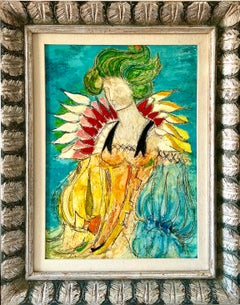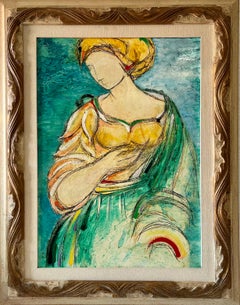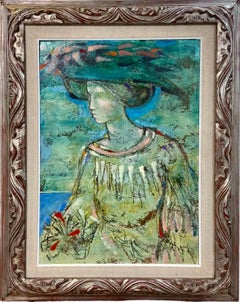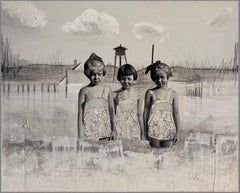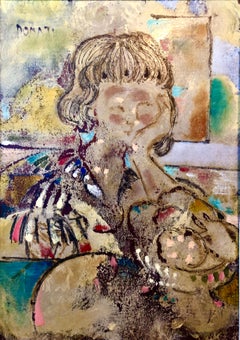
Large Italian Modernist Surrealist Lady Mod Oil Painting "La Ragazza Ungherese"
Want more images or videos?
Request additional images or videos from the seller
1 of 13
Lazzaro DonatiLarge Italian Modernist Surrealist Lady Mod Oil Painting "La Ragazza Ungherese"1963
1963
$5,500List Price
About the Item
- Creator:Lazzaro Donati (1926 - 1977, Italian)
- Creation Year:1963
- Dimensions:Height: 36.25 in (92.08 cm)Width: 28.5 in (72.39 cm)
- Medium:
- Movement & Style:
- Period:
- Condition:good. minor wear. frame has some wear. please see photos.
- Gallery Location:Surfside, FL
- Reference Number:1stDibs: LU3826469612
About the Seller
4.9
Platinum Seller
Premium sellers with a 4.7+ rating and 24-hour response times
Established in 1995
1stDibs seller since 2014
1,777 sales on 1stDibs
Authenticity Guarantee
In the unlikely event there’s an issue with an item’s authenticity, contact us within 1 year for a full refund. DetailsMoney-Back Guarantee
If your item is not as described, is damaged in transit, or does not arrive, contact us within 7 days for a full refund. Details24-Hour Cancellation
You have a 24-hour grace period in which to reconsider your purchase, with no questions asked.Vetted Professional Sellers
Our world-class sellers must adhere to strict standards for service and quality, maintaining the integrity of our listings.Price-Match Guarantee
If you find that a seller listed the same item for a lower price elsewhere, we’ll match it.Trusted Global Delivery
Our best-in-class carrier network provides specialized shipping options worldwide, including custom delivery.More From This Seller
View AllLarge Italian Modernist Surrealist Lady Mod Oil Painting "La Ragazza Ungherese"
By Lazzaro Donati
Located in Surfside, FL
Lazzaro Donati (Italian, 1926-1977), Framed oil painting "La Ragazza Ungherese" The Hungarian Girl. Dated 1961.
Framed: 36.25 x 28.5 inches. In good condition.
Lazzaro Donati was b...
Category
1960s Surrealist Figurative Paintings
Materials
Canvas, Oil
Italian Modernist Surrealist Woman Color Oil Painting Lazzaro Donati La Regina
By Lazzaro Donati
Located in Surfside, FL
Lazzaro Donati (Italian, 1926-1977)
Oil on board. Colorful woman. La Regina (the Queen)
Hand signed upper right. signed, titled on back of panel.
Dimensions: (Frame) H 37" x W 29", (Panel) H 27.5" x W 20"
Lazzaro Donati was born in Florence and attended the Academy of Fine Arts. He began to paint in 1953, and in 1955 held his first exhibition at the Indiano Gallery in Florence. Within three years eleven exhibitions followed in Italy, and as his reputation grew he was invited to give major exhibitions in London, Paris, New York, Chicago, Rio de Janeiro and Montevideo. He is considered one of the foremost contemporary Italian painters and his paintings hang in museums and private collections throughout the Americas, Europe and Asia. His work is recalling the works of the french Raoul Dufy, Dunoyer de Segonzac, Francois Gall and Jean Jansem. This particular work is reminiscent of the work of Manolo Valdes. Donati lived and worked at 24 Piazza Donatello in Florence, the square where generations of artists have created works worthy of the great Florentine tradition. As you entered the narrow hallway to his studio, a gilded life-size Venetian angel beckoned you to his door. Once inside, the present faded away and you found yourself in an atelier where early masters might have worked during the Renaissance. Within, luxurious Persian rugs set off the innumerable objects d’art and antique furnishings. Light poured in through the sloping glass wall on the north side. A dramatic stairway led to an overhanging balcony which served as a private gallery where the artist hung some of his favorite early works. To the left of the entrance was a smaller studio where Donati sculpted, with a window overlooking the famous old English cemetery where tourists laid flowers on the grave of Elizabeth Barrett Browning.
In the main studio itself, where Donati received his clients in an atmosphere as polished as an office of a top executive, one hardly realized that it was here that the artist actually painted. His easel was covered with Persian blue velvet, the painting on the easel was already framed, his chair was upholstered in red velvet and on his palette the colors were arranged with the precision of a Byzantine mosaic. In a corner stand were his latest works, framed and ready to be sent off to his next exhibition in Europe or America. He spoke fluent French and English as well as some Spanish and German. “After all”, he said, “you've got to know how to sell...
Category
1960s Surrealist Figurative Paintings
Materials
Oil, Panel
Italian Modernist Surrealist Woman Colorful Oil Painting Lazzaro Donati
By Lazzaro Donati
Located in Surfside, FL
Lazzaro Donati (Italian, 1926-1977)
Oil on board. Colorful woman.
Hand signed upper right. signed, titled on back of panel.
Dimensions: (Frame) H 37" x W 29", (Panel) H 27.5" x W 20"
Lazzaro Donati was born in Florence and attended the Academy of Fine Arts. He began to paint in 1953, and in 1955 held his first exhibition at the Indiano Gallery in Florence. Within three years eleven exhibitions followed in Italy, and as his reputation grew he was invited to give major exhibitions in London, Paris, New York, Chicago, Rio de Janeiro and Montevideo. He is considered one of the foremost contemporary Italian painters and his paintings hang in museums and private collections throughout the Americas, Europe and Asia. His work i faucist recalling the works of the french Raoul Dufy, Dunoyer de Segonzac, Francois Gall and Jean Jansem. This particular work is reminiscent of the work of Manolo Valdes. Donati lived and worked at 24 Piazza Donatello in Florence, the square where generations of artists have created works worthy of the great Florentine tradition. As you entered the narrow hallway to his studio, a gilded life-size Venetian angel beckoned you to his door. Once inside, the present faded away and you found yourself in an atelier where early masters might have worked during the Renaissance. Within, luxurious Persian rugs set off the innumerable objects d’art and antique furnishings. Light poured in through the sloping glass wall on the north side. A dramatic stairway led to an overhanging balcony which served as a private gallery where the artist hung some of his favorite early works. To the left of the entrance was a smaller studio where Donati sculpted, with a window overlooking the famous old English cemetery where tourists laid flowers on the grave of Elizabeth Barrett Browning.
In the main studio itself, where Donati received his clients in an atmosphere as polished as an office of a top executive, one hardly realized that it was here that the artist actually painted. His easel was covered with Persian blue velvet, the painting on the easel was already framed, his chair was upholstered in red velvet and on his palette the colors were arranged with the precision of a Byzantine mosaic. In a corner stand were his latest works, framed and ready to be sent off to his next exhibition in Europe or America. He spoke fluent French and English as well as some Spanish and German. “After all”, he said, “you've got to know how to sell...
Category
1960s Surrealist Figurative Paintings
Materials
Oil, Panel
Italian Modernist Surrealist Woman Color Oil Painting Lazzaro Donati La Signora
By Lazzaro Donati
Located in Surfside, FL
Lazzaro Donati (Italian, 1926-1977)
Oil on board. Colorful woman. La Signora, Vestita Di Giallo, 1969
Hand signed upper right. signed, titled on back of panel.
Dimensions: (Frame) H 38" x W 30", (Panel) H 28" x W 20"
Lazzaro Donati was born in Florence and attended the Academy of Fine Arts. He began to paint in 1953, and in 1955 held his first exhibition at the Indiano Gallery in Florence. Within three years eleven exhibitions followed in Italy, and as his reputation grew he was invited to give major exhibitions in London, Paris, New York, Chicago, Rio de Janeiro and Montevideo. He is considered one of the foremost contemporary Italian painters and his paintings hang in museums and private collections throughout the Americas, Europe and Asia. His work is recalling the works of the french Raoul Dufy, Dunoyer de Segonzac, Francois Gall and Jean Jansem. This particular work is reminiscent of the work of Manolo Valdes. Donati lived and worked at 24 Piazza Donatello in Florence, the square where generations of artists have created works worthy of the great Florentine tradition. As you entered the narrow hallway to his studio, a gilded life-size Venetian angel beckoned you to his door. Once inside, the present faded away and you found yourself in an atelier where early masters might have worked during the Renaissance. Within, luxurious Persian rugs set off the innumerable objects d’art and antique furnishings...
Category
1960s Surrealist Figurative Paintings
Materials
Oil, Panel
Italian Modernist Surrealist Lady With a Hat Oil Painting, Signora dal Cappello
By Lazzaro Donati
Located in Surfside, FL
Lazzaro Donati (Italian, 1926-1977), "Signora dal Cappello," oil on panel, signed lower left, signed, titled and dated verso, overall (with frame): 22.5"h x 24.5"w
Lazzaro Donati wa...
Category
1960s Surrealist Figurative Paintings
Materials
Oil, Panel
Family Portrait, Large Surrealist Oil Painting Mother, Children, Neo Surrealism
Located in Surfside, FL
Hank Laventhol (1927–2001) was an American painter and master print maker. He worked in painting, graphics, sculpture and photography. Associated with ...
Category
1950s Surrealist Figurative Paintings
Materials
Oil, Board
You May Also Like
UNTITLED
By Sofia Ruiz
Located in Los Angeles, CA
"UNTITLED"
OIL AND ACRILIC ON CANVAS
SIGNED
35.5 X 27.5 INCHES
Sofía Ruiz was born in 1982.
What she expresses through her paintings has to do with whe...
Category
2010s Surrealist Figurative Paintings
Materials
Canvas, Oil, Acrylic
$6,500
20th Century French Modernist Signed Oil Painting Portrait of Young Girl Green
Located in Cirencester, Gloucestershire
Tristan Fabris 1970's French surrealist artist
signed oil on canvas, framed
framed: 19 x 16 inches
canvas: 18 x 15 inches
private collection, France
The painting is in overall sound ...
Category
1970s Surrealist Portrait Paintings
Materials
Canvas, Oil
Mr. L (oil painting monochrome vintage old man beard portrait nostalgia flower)
By Rudolf Kosow
Located in Quebec, Quebec
keywords; surrealism, portrait, oil painting, earth tones, figurative painting, strangeness, contemporary surrealistic, unsettling, contemporary figurative painting, dreams, symbolic...
Category
2010s Surrealist Portrait Paintings
Materials
Canvas, Oil
MEJOR SOLAS
By Sofia Ruiz
Located in Los Angeles, CA
"MEJOR SOLAS"
OIL AND ACRILIC ON CANVAS
SIGNED AND DATED 2010
EXHIBITED MUSEO DEL BANCO CENTRAL
DE COSTA RICA
47.5 X 59 INCHES
Sofía Ruiz was born in ...
Category
2010s Surrealist Figurative Paintings
Materials
Canvas, Oil, Acrylic
surreal woman face oil on canvas painting
By Miquel Torner de Semir
Located in Barcelona, Barcelona
Miquel Torner de Semir (1938) - Surrealist figure - Oil on canvas
Oil measures 46x38 cm.
Frameless.
Miquel Torner de Semir (1938)
Catalan painter attracted by the Middle Ages and I...
Category
1990s Surrealist Figurative Paintings
Materials
Canvas, Oil
$633 Sale Price
56% Off
Equestrian Style and Decor II - Contemporary surrealistic horse painting
By Carlos Gamez de Francisco
Located in DE
Gamez de Francisco paints and photographs very passionately, making statements filled with symbolism. He frequently includes insects in his artwork. He says: Flying insects represent...
Category
2010s Surrealist Portrait Paintings
Materials
Canvas, Oil
